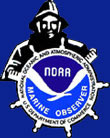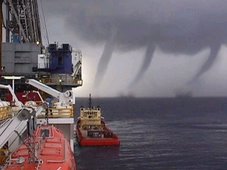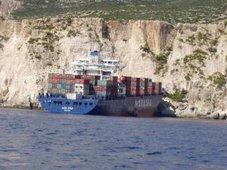 Hurricane season outlooks of limited use
Hurricane season outlooks of limited useIt's a lot like Groundhog Day — and the results are worth just about as much.
"The hairs on the back of my neck don't stand up," ho-hums Craig Fugate, director of emergency management for Florida, the state that got raked by four hurricanes — three of them "major" — in 2004. When it comes to preparing, he says, these long-range forecasts "are not useful at all."
The AP contacted the emergency management agency in every coastal state from Texas to Maine and asked whether these seasonal forecasts play any role in their preparations for June 1. Their response was unanimous: They're a great way to get people thinking about the upcoming season, but that's about it.
Even the insurance company that helps fund Gray's work acknowledges the forecasts are of no real-world value to its operations.
Regardless, since the former Colorado State University climatologist pioneered the seasonal predictions in 1984, other forecasters have followed suit.
The National Oceanic and Atmospheric Administration, the Tropical Storm Risk Consortium in London and, most recently, the Coastal Fluid Dynamics Laboratory at North Carolina State University in Raleigh are now among teams attempting to handicap the storm season weeks or months ahead.
After high-profile, back-to-back busts by Gray and others, critics have questioned whether these long-range outlooks do more harm than good. But the very question presupposes that Gray, et al., have been promising more than they can deliver.
They can pretty accurately predict an above- or below-average season, even predict the likelihood a major storm will hit SOMEWHERE along the U.S. coast. Beyond that, they're not promising anything.
"Honestly, I think people get a lot more excited about it than I do in terms of what its usefulness is," says CSU scientist Phil Klotzbach, who has largely taken over the hurricane work of Gray, now semiretired.
From the beginning, Gray issued disclaimers with his forecasts, like the one from May 1989 that asserted the forecast "can only predict about 50% of the total variability in Atlantic seasonal hurricane activity." READ>
WEATHER NOTETips to help people whose homes were damaged by the tornadoes
KUSA - Experts say homeowners whose homes were damaged in the tornadoes Thursday need to catalog the damage for insurance purposes.
Anderson adds that homeowners should go ahead and make any repairs that can't wait.
Anderson, who drove to Platteville to help out, planned to be out all night with board-up crews, assisting homeowners like Mike Cline.
"My wife called me and said the roof was coming in and she went to the basement," Cline told 9NEWS.
Allstate Insurance Company says it will streamline the claims process for its customers and has post-storm recovery tips that all homeowners can use.
Allstate says customers who had cars or homes damaged or destroyed by the tornadoes can call the company at 1-800-54-STORM or visit Allstate.com.
Allstate's 10 tips for storm recovery:
1. Make sure your home is structurally safe. Be extremely careful inside your home. Debris may be hazardous and the potential for collapse may exist. You may want to retrieve personal items, but if you're told by authorities to stay out, stay out. It's for your own safety. READ>
Prepare for severe weather since warnings may be short
CHEYENNE -- The clouds darken, there's driving rain, the winds quicken and air raid sirens sound.
Some residents finish pumping gas or putting groceries away. Some are already home or inside at work. Others seek shelter.
The sirens signal a tornado warning in this case, the type residents witnessed here May 22 and 23.
But what exactly are residents expected to do?
"You're supposed to go inside and turn on media, and you're supposed to get instructions on what to do," said Rob Cleveland, Laramie County Emergency Management director.
And it doesn't have to be for a tornado.
The sirens could be a warning for a flash flood, hazardous materials emergency or any other type of natural disaster.
How warnings are developed and how information about what to do is sent out to the public can be a complicated process, but there is a system in place. READ>
RS


































































































![Validate my RSS feed [Valid RSS]](valid-rss.png)